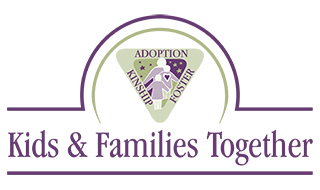Having Faith August 2018
Dear Faith,
I have two adopted children out of foster care. They are six and eight years old. One is Latino and the other is African American. My husband and I are both Caucasian and see ourselves as a fully blended family. One of our favorite books is Families are Different. Always, we are looking for ways to impress to our children that there are all kinds of different families and that diversity is a good thing. However, now that school is starting, I would appreciate some ideas for how to support my children in the school environment where they might be asked difficult questions from their peers or be given assignments, possibly more challenging for them due to the complexity of adoption.
— Stressed in Ventura
The beginning of a new school year is often both exciting and stressful all at the same time. New teacher, new grade and new school assignments. It takes time to acclimate to the beginning of a school year for children, parents and teachers. Parents want their children to be emotionally and physically safe at school. Adoptive parents know that their children will inevitably face comments and questions about adoption, and they carry the extra worry about whether their child(ren) will find the support they need at these times. Parents know that what happens at school can greatly influence how both children and teens feel about being adopted.
It’s important to have ongoing and reflective communication with your child’s teacher so that he/she is aware of issues that might come up contributing to your child feeling marginalized. Here are some strategies that can be helpful:
- Acceptance- Communicate with your child’s teacher about adoption. Normalize adoption/adoptive families by demonstrating both personal and social acceptance of adoption as one way to build a family. Treating adoption as a “secret” sends the message that adoption is something to be ashamed of.
- Accuracy– Help your child’s teacher to educate about adoption/adoptive families by providing accurate information at the appropriate time and in an interesting way. This is not done to single your child out but rather to help the class understand adoption by referencing books, movies, observing Adoption Awareness Month, etc. Teachers can also remind students that stories shouldn’t be generalized to the entire adoptive family. Teachers should be encouraged to include multicultural, blended and other “non-traditional” family formations.
- Assignments- There are some common school assignments that can be challenging for children who experienced foster care or who were adopted at an older age. For example, family trees, or asking children to bring baby pictures can be stressful. The best way to handle these kinds of assignments is to broaden them in a variety of ways for the entire class so as to not single out someone as different. For example, instead of doing a family tree, have the class do family orchards, or a family wheel with the classmate at the center and all the important people within the child’s life connected to the wheel.
As needed, reach out to Kids & Families Together for resources that can help you to navigate these various challenges.
— Faith
 Kids and Families Together
Kids and Families Together